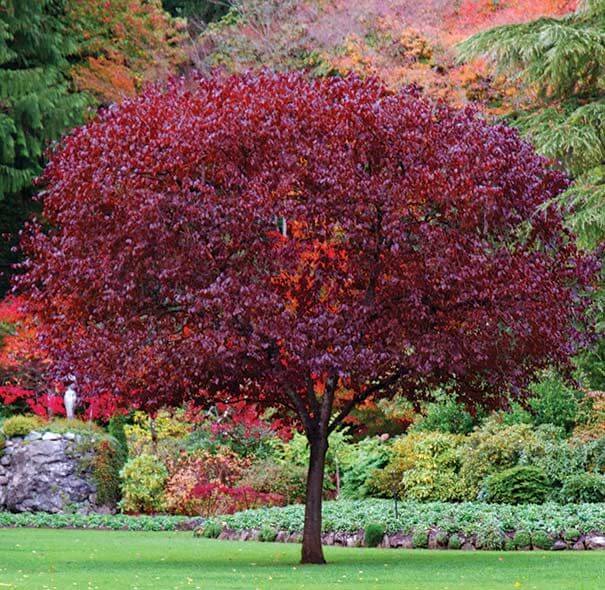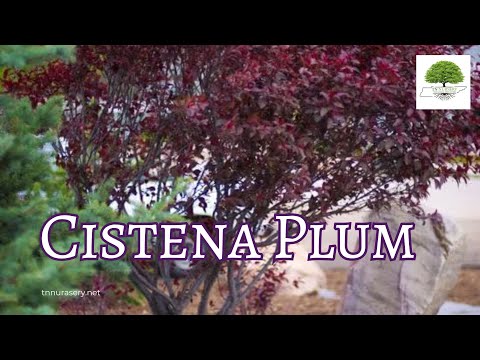Cistena Plum Trees for Sale (Prunus × Cistena)
The Cistena Plum Trees are glorious, fruit-bearing tree that shine in every season. It is also known as the red leaf plum or purple leaf cherry tree, because of its purple and red coloring in the leaves and bark. The fruits are drupes – a fleshy fruit with thin skin and a stone pit, and are somewhere between the size of a plum and a cherry.
These fruits are a favorite of birds and small mammals, so they are a perfect choice for a wildlife lover's garden. The delicate pink and white flowers against the purple-red branches make for a warm, vibrant centerpiece for your garden space.
Cistena Plum Plant Details
Family: Rosaceae
Light Requirement: Full sun
Water Needs: Moderate
Height: 5-8 ft
Spread: 5-8 ft
Soil Preference: Moist, well drained, clay, loam, sand
Season of Interest: Spring, Summer
Flower Color: Pink, White
Fruit: Purple-red drupes
Wildlife Value: Birds, Butterflies, Bees
Notable Characteristics of Cistena Plum Trees
This purple-red tree is often considered a shrub because of its woody, twiggy appearance. The Cistena Plum grows in an upright pattern but spreads out as it matures, stretching its branches horizontally. It can be left to grow naturally, should you enjoy the sprawl, but can also easily be pruned to a more manageable shape.
This unique growth pattern purple leaf sand cherry requires some forethought before planting, to ensure no other plants get crowded out. This tree flowers in the spring, sprouting among small pink and white blooms that resemble cherry blossoms amidst its leaves. The foliage is a true purple-red color – no green in sight. The bark even has such hues, making the whole bush harmonious in spring, summer and fall.
Landscape and Maintenance of Cistena Plum Trees
The Cistena Plum, while gorgeous, can be quite a handful. It is toxic to animals like cats, dogs and horses so take care when planting in an area frequented by your furry friends. It is also highly prone to diseases such as leaf spot, dieback, leaf curl, powdery mildew, root rot, honey fungus and fire blight.
The tree is prone to damage by many insects as well, such as spider mites, japanese beetles, leafhoppers, caterpillars and aphids. The wood may see damage from borers and trunk cankers caused by fungi or bacteria. Due to all its vulnerabilities, it only has a lifespan of around 10 years, but is sure to be a true beauty and wonderful addition to your garden for every one of them.
Exposure
The Cistena Plum thrives in full sun to partial shade. It should acquire at least 6 hours of direct sunlight daily for optimal growth and vibrant foliage. In shaded areas, it may not flower as profusely.
Height at Maturity
Over 25 Feet
Usage
Fruit
Shipped As
Bare-root
Ships
UPS
Planting Zones
3-7




